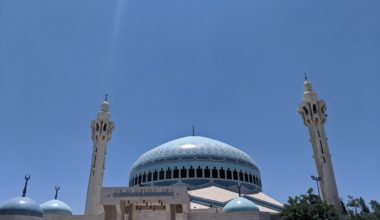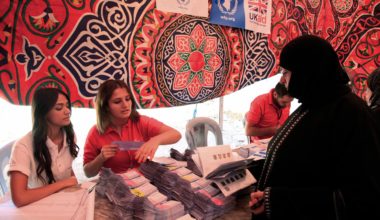
By Dr Carol Palmer, Director of CBRL’s British Institute in Amman
Earlier this month, CBRL’s British Institute in Amman hosted a two-day workshop to explore the memory and heritage of the First World War in the Middle East. This bi-lingual (English-Arabic/Arabic-English) workshop brought together academics, writers and journalists, historians, artists, and cultural heritage practitioners from Jordan, the UK, Australia and New Zealand.
In Jordan, the First World War is commemorated as the time of the ‘Great Arab Revolt’. The aftermath of Ottoman rule marks the point at which the Hashemite Kingdom of Jordan started to be forged. Following the Great War, the Allies carved up the Levant and, in the region today, this is held up as a betrayal of the colonial powers that sowed the seed for the current conflicts.
The aim of this workshop was to take a first step in exploring memories of WW1 and its contemporary significance through academic and creative practice in the Levant region today. CBRL’s role was to connect UK based and regional scholars who will explore this theme in an ongoing dialogue.
The workshop was organised by Dr Katherine Baxter (Associate Professor in English Literature from Northumbria University), Cat Auburn (New Zealand film-maker and sculptor) and Dr Philip Proudfoot (then Chancellor’s Fellow at Northumbria and former CBRL Amman Assistant Director) and the team from CBRL’s British Institute in Amman. It was funded by Northumbria University as part of their Global Challenges Networking and Project Preparation programme.
Each of the three organisers’ research addresses in some aspect the impacts of colonialism and conflict, with Katherine Baxter and Cat Auburn particularly interested in WW1 and Philip Proudfoot’s research concentrating on the current Syrian conflict. The idea for the workshop grew from conversations around their shared bodies of work and the desire to combine academic inquiry and the creative arts. Their desire to extend the conversation into memories of WW1 in the region and Philip’s close association with CBRL brought them to Amman, one of the sites of the conflict’s Eastern Front.
Participants included: senior Jordanian historians Dr Raouf Abu Jaber and Dr Baker Al Majali; young scholars from Yarmouk University who are working on an oral history project led by their professor, Dr Omar Al Ghul, a representative the Department of Antiquities with expertise in dark heritage; the director of Jordan Heritage, and the artist Mr Hussein Da’sah; as well as CBRL British Institute staff. We were delighted that the writers Mr Mofleh Aladwan and Ms Linda France from the Alta’ir Creative Writers Exchange also took part.

The first session, led by Katherine Baxter, explored the relatively limited representations of the Middle East in popular English language literatures from and about WW1. This is in stark contrast with those relating to the War’s Western Front, the memory and social consequences of which have featured prominently in First World War commemorations in the UK.
Arzaq Yousef, a young scholar from Yarmouk University gave a presentation of a project that looks at oral history in Jordan during the First World War. The project* aims to record oral narratives, passed down through generations from people of the Levant.
The final session of day one was led by Cat Auburn who provided a moving reflection on the colonial history of New Zealand, on the roles played by artistic interventions in memory and heritage, and how WW1 is memorialised in Australia and New Zealand. She introduced the inspiration behind her exhibition ‘The Horses Stayed Behind’, as well as ideas for her new project, ‘I Say Nothing’. The Eastern Front has a much larger significance for New Zealand and Australia, as commemorated annually on ANZAC day. However, beyond Gallipoli, little is known of the hardships of battle experienced in the southern Levant and Egypt.

The second day began with a visit to Amman’s Roman Theatre. Cat Auburn read from a recent publication – a trooper’s memoire of the battles fought – focussing on the battles of Amman. There was considerable debate amongst the group whether the hillside where the Roman Theatre is found really is where the first battle of Amman took place or whether it was another hillside, much closer to CBRL’s British Institute in Amman. This served as another reminder to how much the history of even well recorded battles is contested.

The group then made its way for Friday breakfast to the nearby home of Mr Mamdouh Bisharat,’The Duke of Mukhaibeh’ as he is affectionately known. The Bisharats are one of the original land-owning families of Salt, the main urban centre east of the River Jordan during WW1. The Australian war artist George Lambert drew a portrait of his father. The group was treated to generous hospitality, a tour of nearby historic houses, wonderful stories of times past and a privileged viewing of the family photograph collection that included one of a lunch held by the Duke’s family in honour of General Allenby not long after his entrance to Jerusalem in 1917.
After returning to the Institute, Philip Proudfoot brought our focus to a current context with a presentation on digital art production among opposition-aligned Syrian migrant workers during the Syrian Uprising and the politics of representation in social anthropology. Though the technologies have changed, Philip drew out connections across the century on the theme of ‘Revolution and Loss’, the title of his upcoming book.
This fascinating workshop demonstrated the limitations of ‘telling’ history through words alone. Instead, much of the workshop’s success was, in part, due to an approach that combined academic inquiry and the creative arts – something that we see as a growing trend, particularly in exploring traumatic and complex narratives.
The narrative held up broadly in the region of this period is as a main contributor to current conflicts – specifically the carving up of the region in the aftermath of WW1 and the betrayal of the colonial powers – but this is little heard of in the UK today. By contrast, at the workshop, the name ‘Lawrence of Arabia’ was barely mentioned.
*The WW1 oral history project is implemented by the French Institute for the Near East (IFPO) and the Goethe-Institut in partnership with universities across Jordan and the National Archive of Jordan.
Carol Palmer is CBRL’s director of the British Institute in Amman, a post she has held since September 2009.
The views expressed by our authors on the CBRL blog are not necessarily endorsed by CBRL, but are commended as contributing to public debate.















